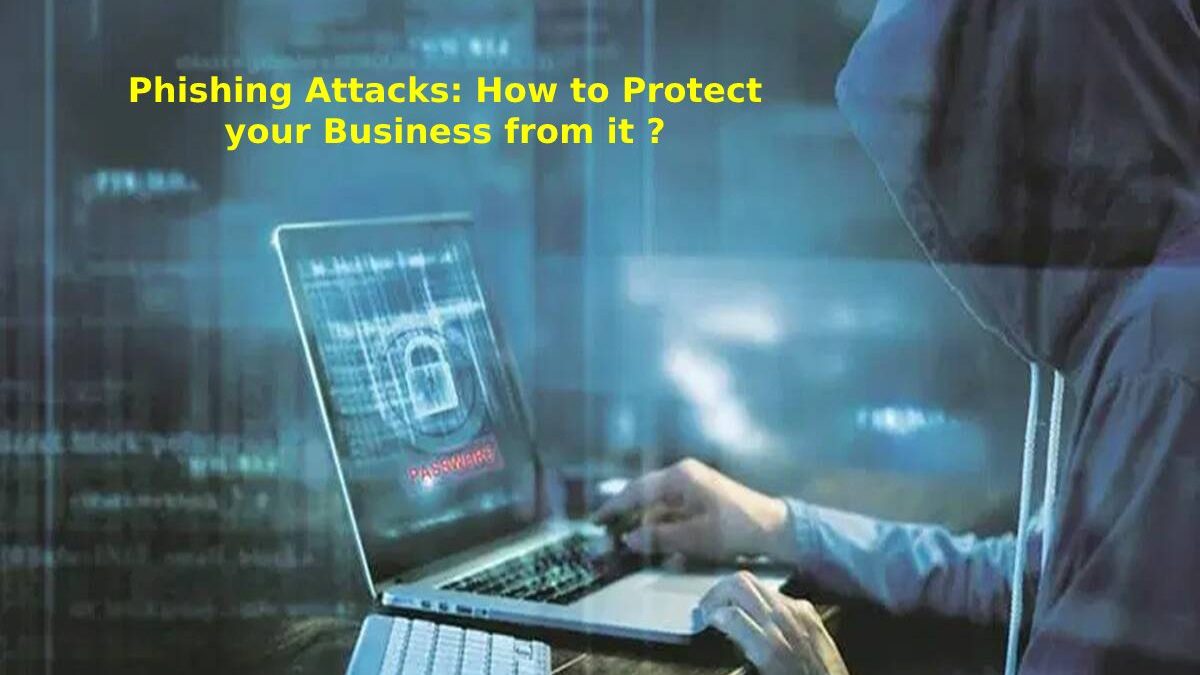A phishing attacks is a cybercrime where scammers effort to obtain your sensitive information, such as personal details, passwords, or even bank and credit card details, by posing as a trusted source. Keep in mind the following tips to avoid scams and learn what to do if you suspect that your private information may have been compromised.
Table of Contents
Tips to Prevent Phishing Attacks
Learn to Identify Suspected Phishing Emails Clearly
Some aspects unequivocally identify this type of attack via email
- They use names and adopt the image of actual companies
- They bear the name of the company or that of an existing employee of the company as the sender
- It include websites that are visually the same as those of actual companies
- As a hook, they use gifts or the loss of the existing account itself
Verify the Source of Data of your Incoming Emails
Your bank will not ever ask you to send your passwords or personal data by mail. So never answer these types of questions and if you have the slightest doubt, call your bank directly to clarify it.
Never Enter your Bank’s Website by Clicking on Links Included in Emails
Please do not click on the hyperlinks or links attached to you in the email, as they could secretly direct you to a fake website. Instead, type the web address directly into your browser or use bookmarks/favorites if you want to go faster.
Strengthen the Security of your Computer
Common sense and prudence are as essential as keeping your computer protected with a good antivirus that blocks this type of attack. In addition, you must continuously keep your operating system and web browsers up to date.
Enter your Confidential Information Only on Secure Websites
Safe websites must begin with ‘HTTPS://,’ and the sign of a small closed padlock must look in your browser.
Periodically Review your Accounts
It never pains to check your bank accounts periodically to alert any irregularities in your online transactions.
Not Only Online Banking Experiences Phishing
Most phishing attacks target banks, but in reality, they can use any other popular website of the moment as a hook to steal personal data: eBay, Facebook, Pay Pal, etc.
Phishing Knows Languages
Phishing knows no borders, and attacks can reach you in any language. As a common rule, they are poorly written or translated, which can be another indicator that something is wrong. If you never enter your bank’s website in English, why now should you receive a communication from it in this language?
Whenever in Doubt, Be Prudent and Don’t Take Risks
The best manner to get it right is to systematically reject any email or communication that encourages you to provide sensitive data. Eliminate this type of email and call your bank to clarify any doubts.
Be Informed Periodically About the Evolution of Malware
If you need to keep up to date with the modern malware attacks, recommendations, or advice to avoid any danger on the Internet.
Different Types of Phishing Attacks
Not all phishing attacks are created equal. There are different kinds of phishing attacks that you need to prepare members of your organization to detect. Here are some common types
Spear Phishing

Spear phishing is a scam targeting a specific audience. The recipient does not receive the email by accident. The attacker has carried out a series of particular investigations to find you and has sent you a message that would make logic to you. It could be because he’s part of your company’s human resources department, or maybe because he recently post online that he’s been promoted.
Whaling
Whaling is a kind of spear-phishing aimed directly at a company’s executives, the “big fish.” A company’s management team is usually a type of public information that can be easily found on the company’s website. So it makes them easy targets. But they also often have access to sensitive data and make financial decisions, making them a very lucrative target for attackers.
BEC and CEO Fraud
Business Email Compromise (BEC) and CEO scam is another type of spear-phishing that pretends to be your company or the CEO of your company. Knowing that staff is quick to trust those in positions of authority, phishers pose as people who are likely to get specific requests illicitly fulfill. Corporation email domains are easy to spoof, and authorized logos can be found online. Therefore the names of the people who work in your company can also be easily obtain through social networking pages. This situation makes it easy for phishers to focus on BEC scams.
Wishing
Vishing is a social engineering practice that uses the phone (the term vishing comes from “voice phishing”). These are essentially the scam phone calls you receive today and probably have already received, even long before having a computer in your home. These traditional scams are positive because hearing a person’s voice helps create a relationship with the caller. It makes it more difficult for you not to comply with the caller’s request or request.
Smishing / Smashing
Smashing, also known as SMShing, is malicious text messages (the term comes from “SMS phishing,” where SMS refers to text messages). These are shorten versions of more traditional phishing scams and typically contain a shortened hyperlink with a short, concise statement requiring urgent action.
Phishing Awareness: How to Catch a Phish?
One of the most mutual first questions is how can I tell if something is a phishing attack? Although we could delve into all the technical ways that exist to evaluate email headers. In the case of end-users in general, it is necessary to train them to detect some key red flags. But even more important than the red flags is reminding them that if they have any concerns, they should do their homework and report the email to their security team for further investigation if they suspect it is a phishing attack. Finally, remember that it is essential to encourage a healthy dose of disbelief.
Phishing Warning Signs
What are the warning signs? There are many, and also these can change as phishers change their tactics. In general, if your staff perceives any combination of these warning signs, you should proceed with the utmost caution:
- Greetings or generic signatures
- Missing sender or company information
- Pixelated or blurry images
- Website links that don’t make sense
- Bad spelling or grammar in writing
- Threats or urgent requests
- Deals that are too worthy of being true
- Requests for personal information or to transfer funds, move money, or change direct
- Unexpected emails or attachments
- Inconsistency between subject and also message
- No backup communications
Conclusion
Phishing is called the set of techniques that pursue the deception of a person. Imitating the identity of a trusted third party, such as a bank, a public institution, company, or social network, to manipulate it and get it to provide information.
Also Read: Cloud Storage: Benefits of Using in Small Businesses

